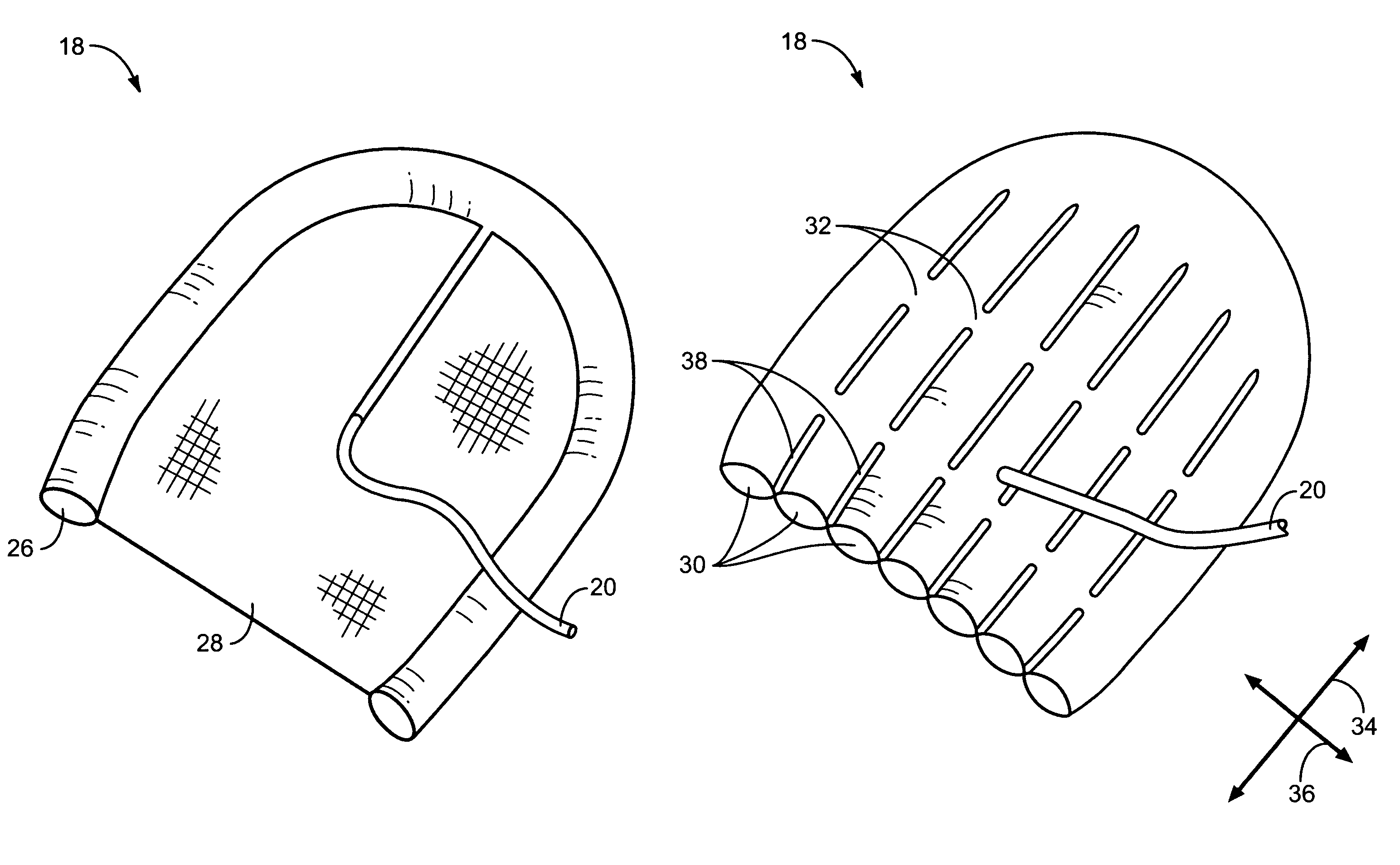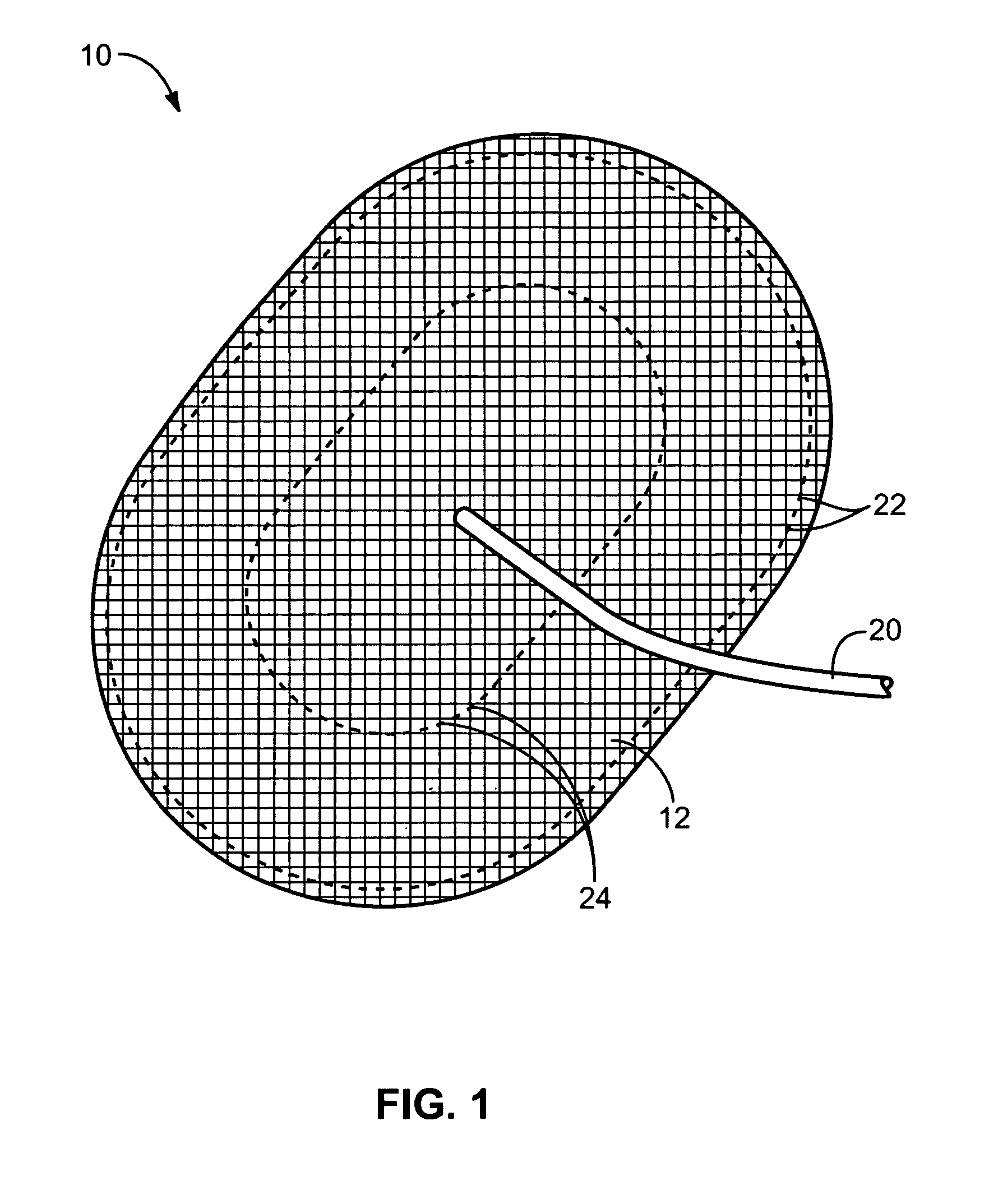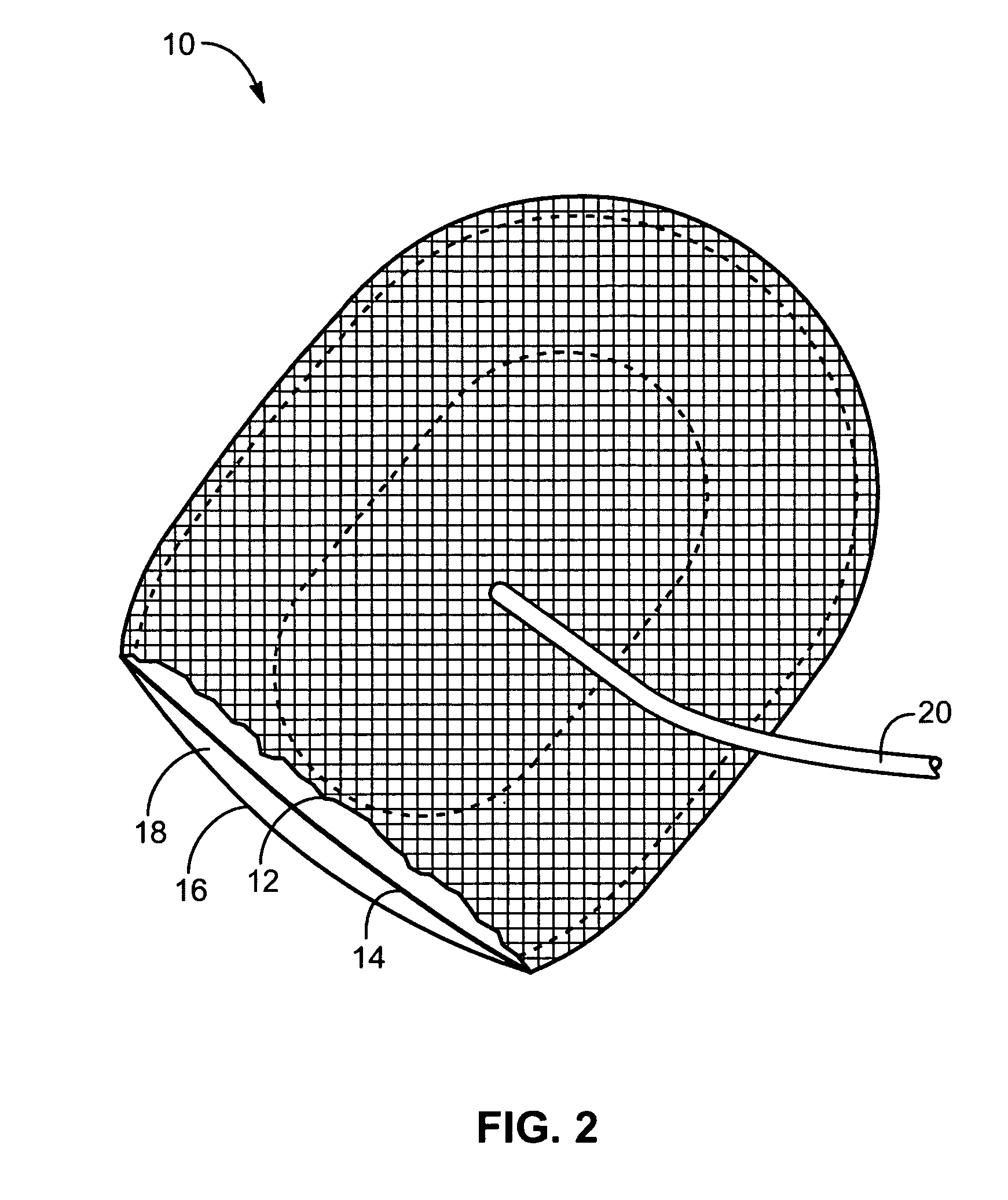Inflatable hernia patch
a hernia patch and inflatable technology, applied in the field of hernia repair, can solve the problems of increased pain and discomfort, higher probability of hernia recurrence, and general only suitable for very small hernias
- Summary
- Abstract
- Description
- Claims
- Application Information
AI Technical Summary
Benefits of technology
Problems solved by technology
Method used
Image
Examples
Embodiment Construction
[0037]It will be readily understood that the components of the present invention, as generally described and illustrated in the Figures herein, could be arranged and designed in a wide variety of different configurations. Thus, the following more detailed description of the embodiments of the apparatus and methods of the present invention, as represented in the Figures, is not intended to limit the scope of the invention, as claimed, but is merely representative of selected embodiments of apparatus and methods in accordance with the invention. The invention will be best understood by reference to the drawings, wherein like parts are designated by like numerals throughout.
[0038]Referring to FIGS. 1 and 2, in general, a patch 10 in accordance with the invention for repairing a hernia or other intra-abdominal defect may include a mesh layer 12, a filler 14, and a containment layer 16. As explained in more detail hereafter, the mesh layer 12, containment layer 16, and filler 14 may be c...
PUM
| Property | Measurement | Unit |
|---|---|---|
| area | aaaaa | aaaaa |
| chemical reaction | aaaaa | aaaaa |
| bioabsorbable | aaaaa | aaaaa |
Abstract
Description
Claims
Application Information
 Login to View More
Login to View More - R&D
- Intellectual Property
- Life Sciences
- Materials
- Tech Scout
- Unparalleled Data Quality
- Higher Quality Content
- 60% Fewer Hallucinations
Browse by: Latest US Patents, China's latest patents, Technical Efficacy Thesaurus, Application Domain, Technology Topic, Popular Technical Reports.
© 2025 PatSnap. All rights reserved.Legal|Privacy policy|Modern Slavery Act Transparency Statement|Sitemap|About US| Contact US: help@patsnap.com



